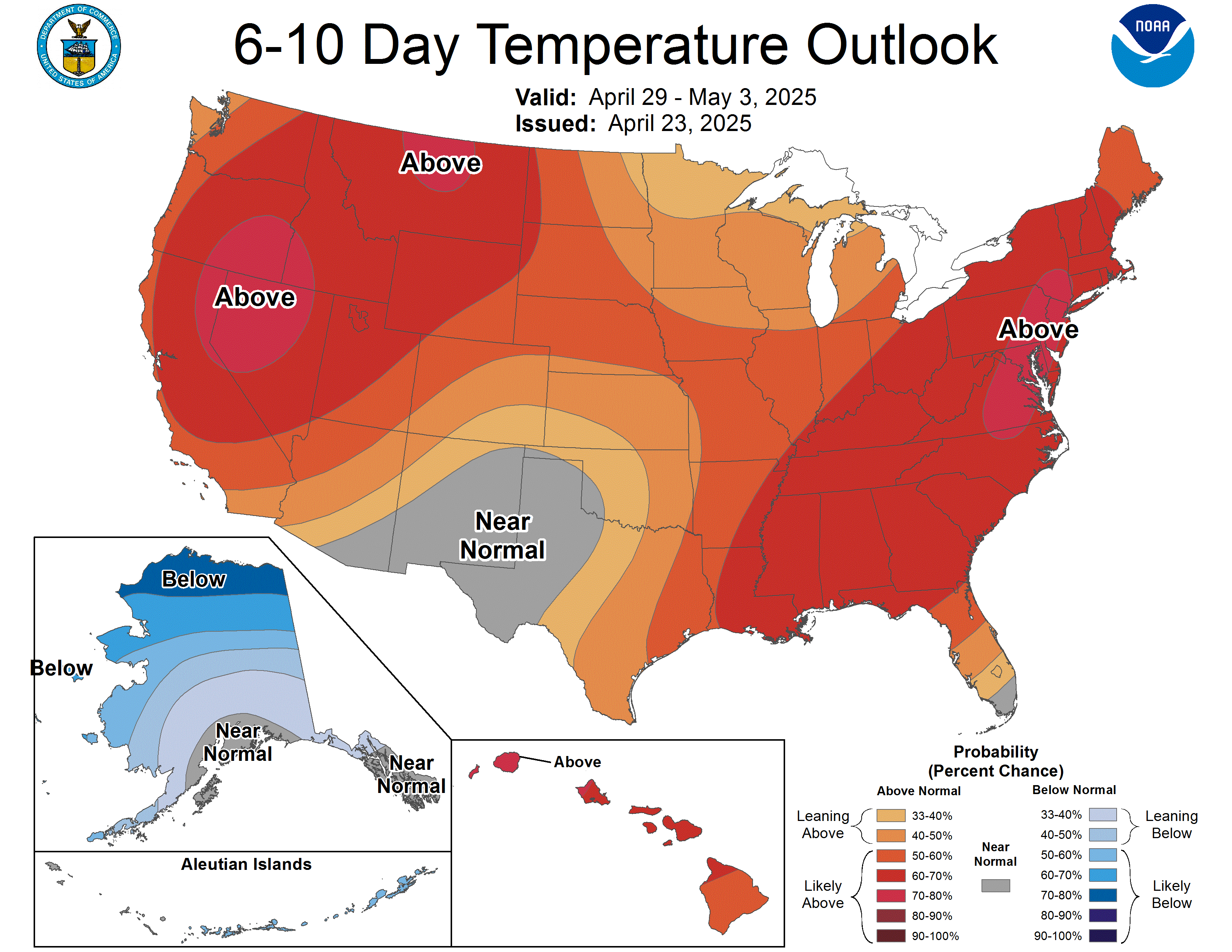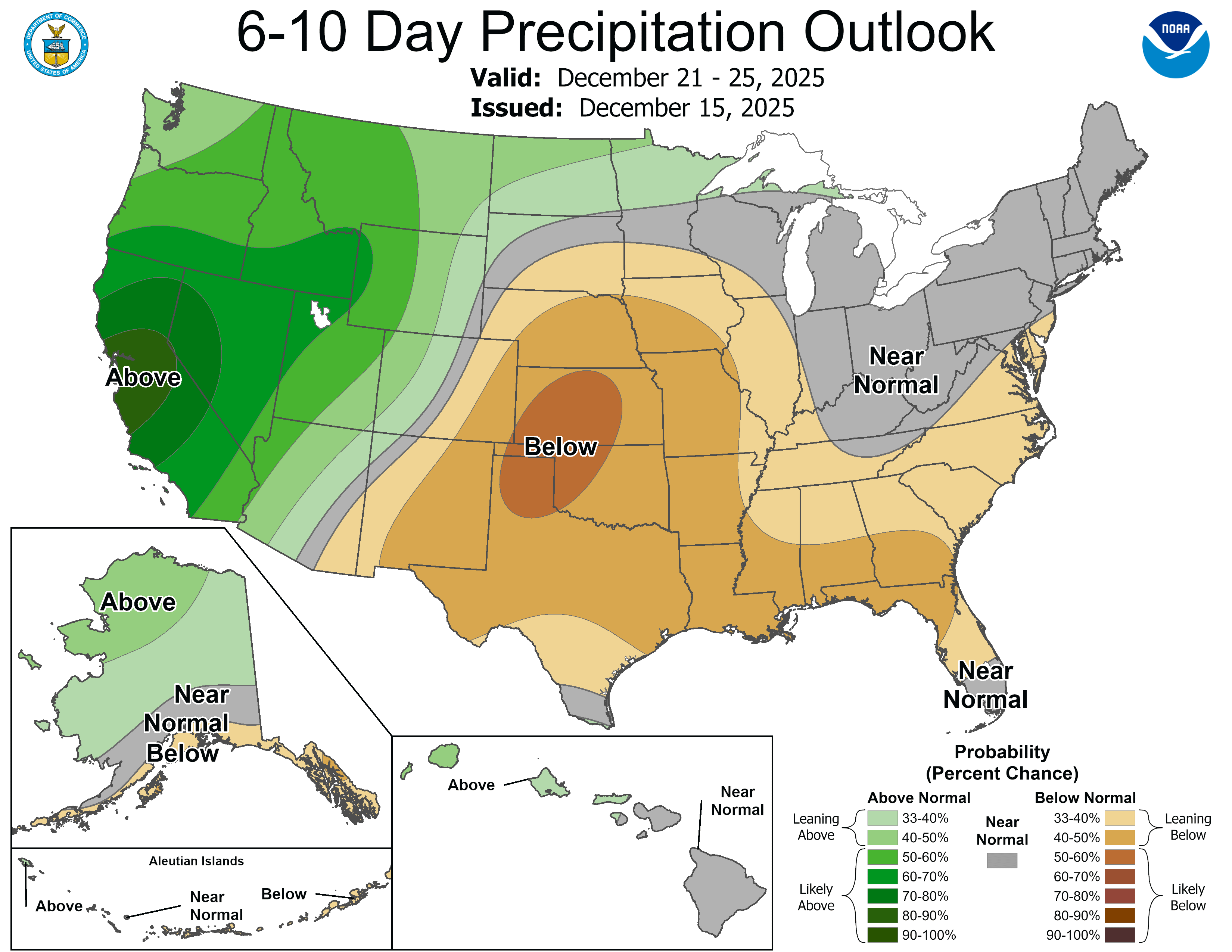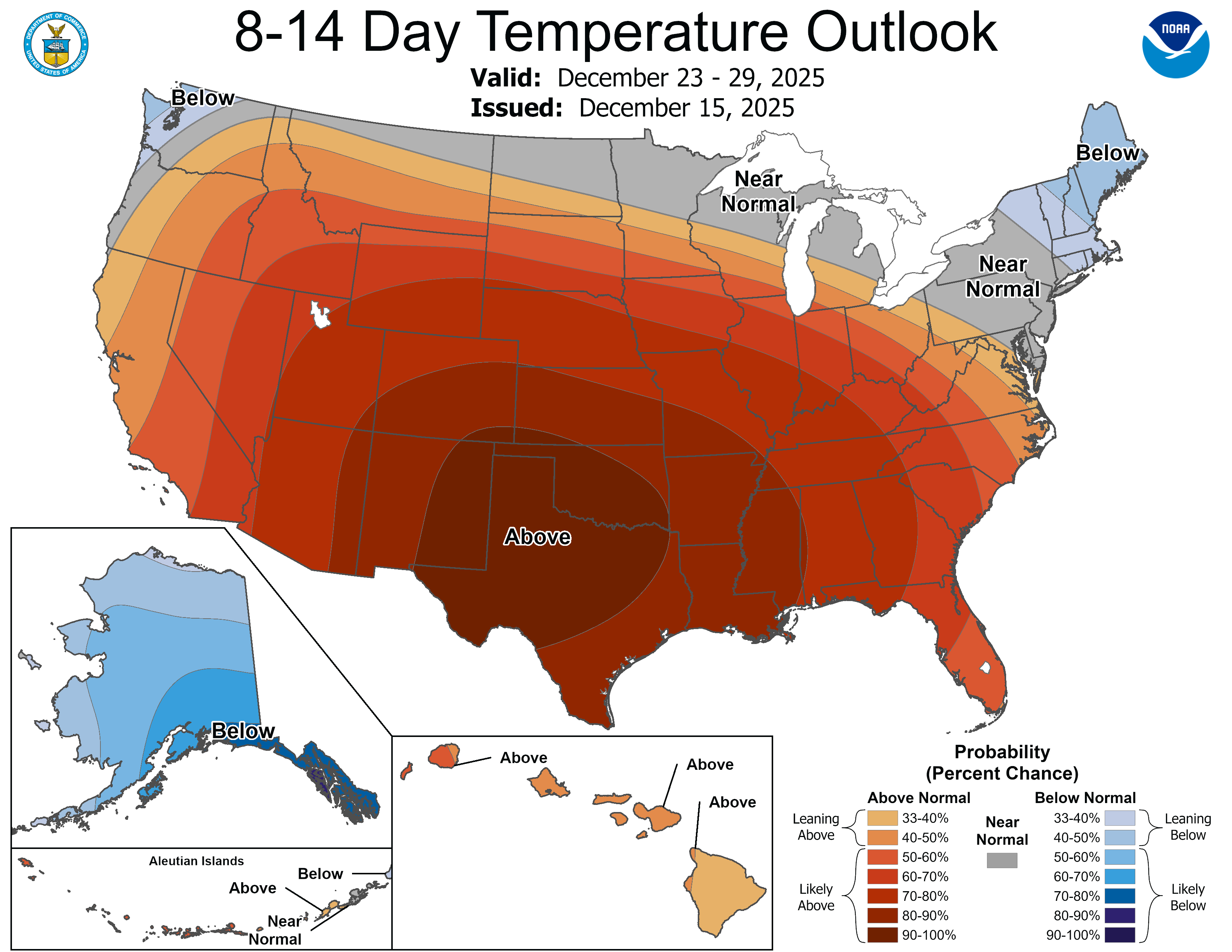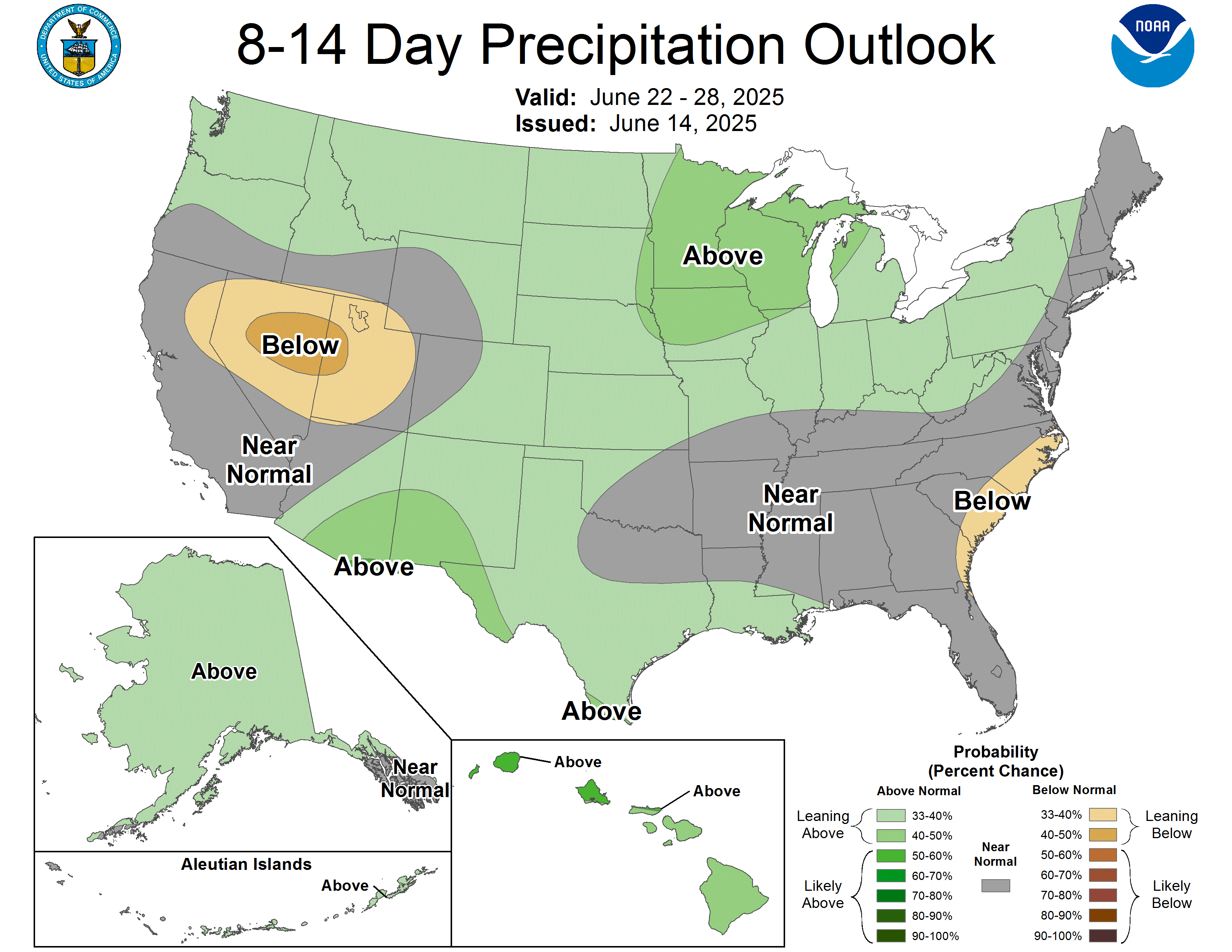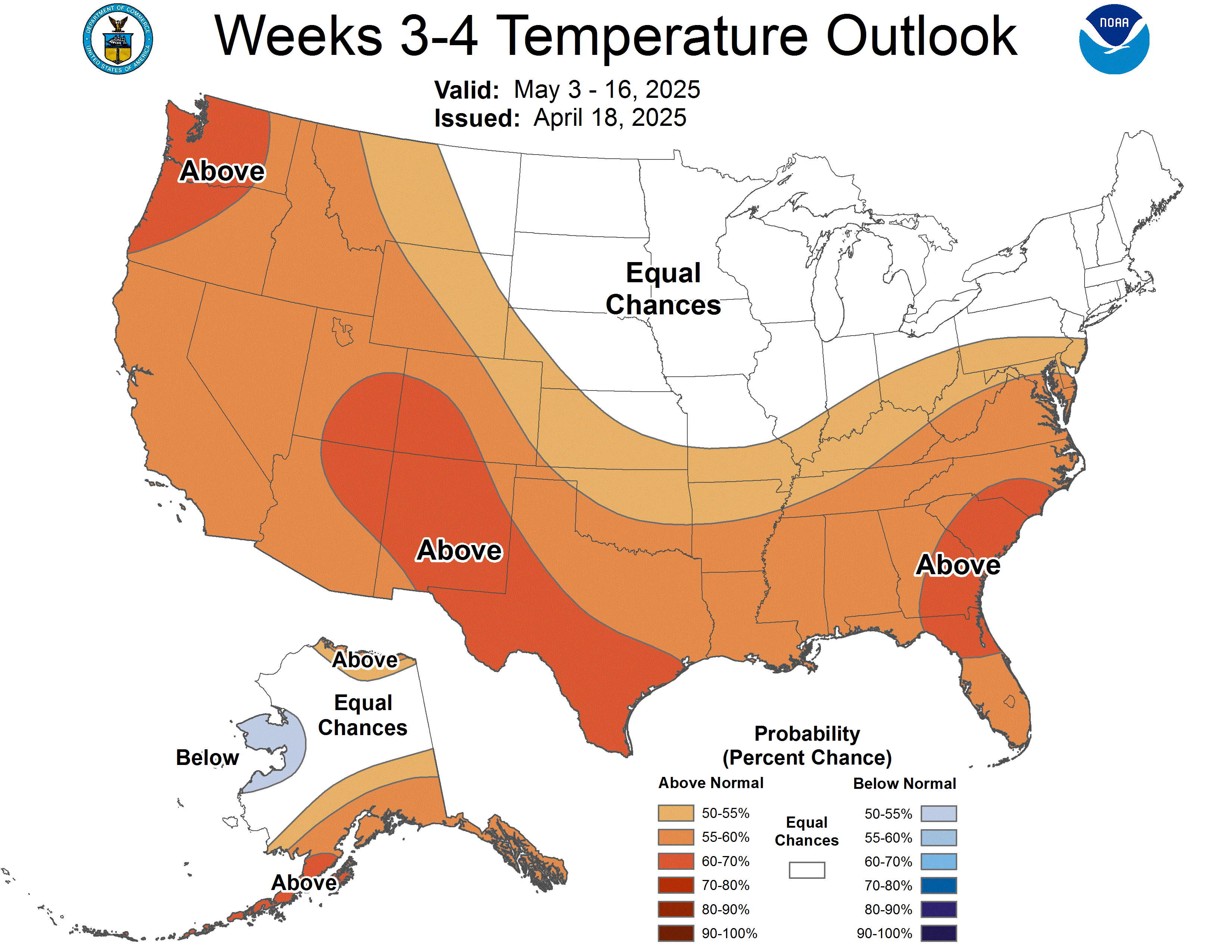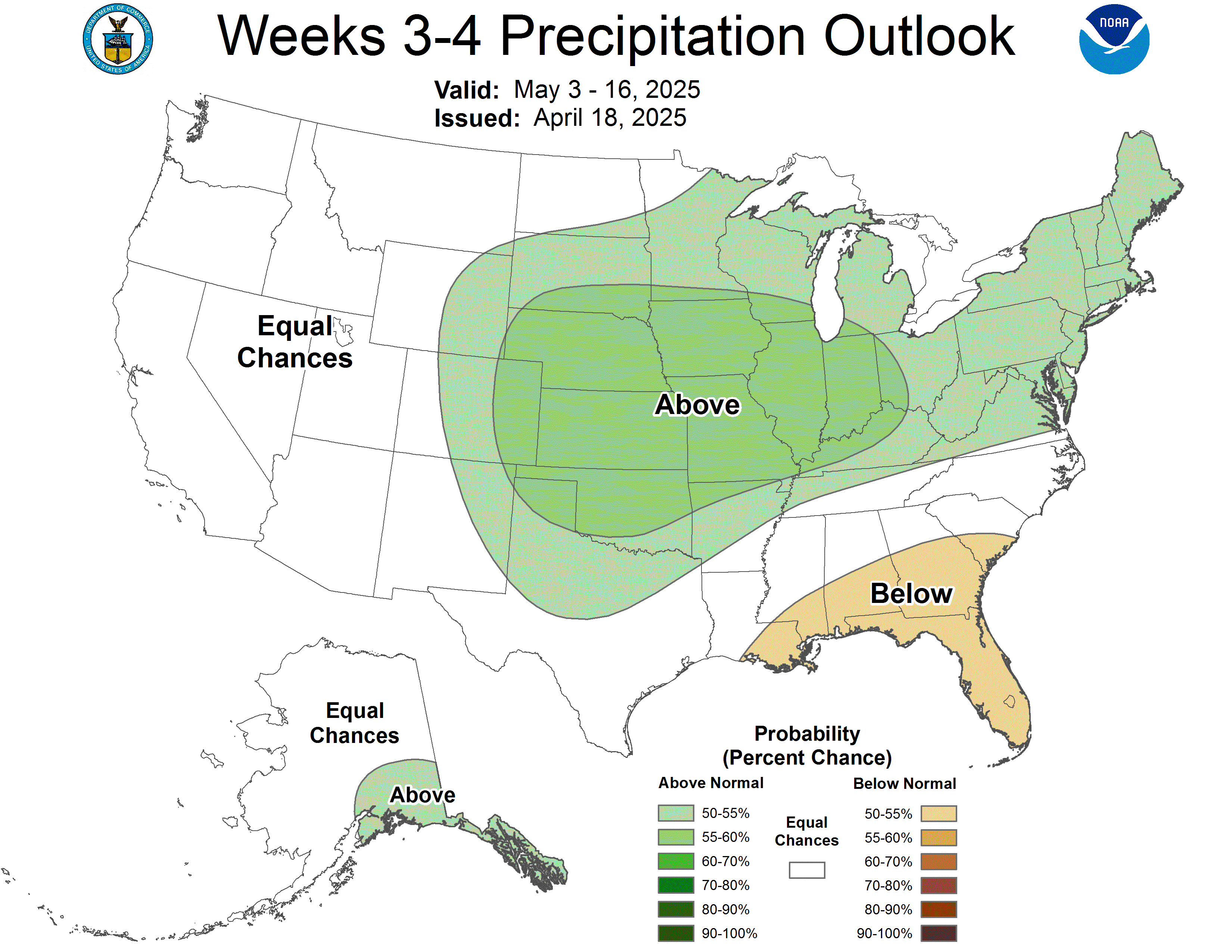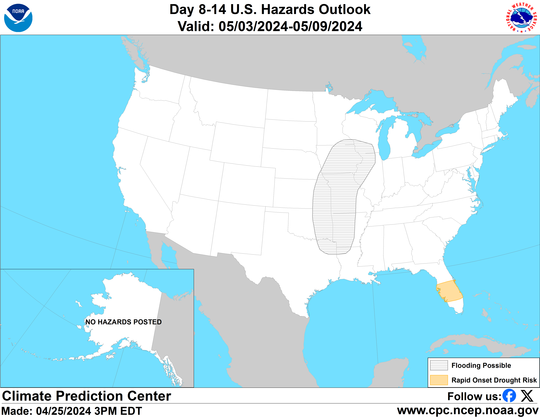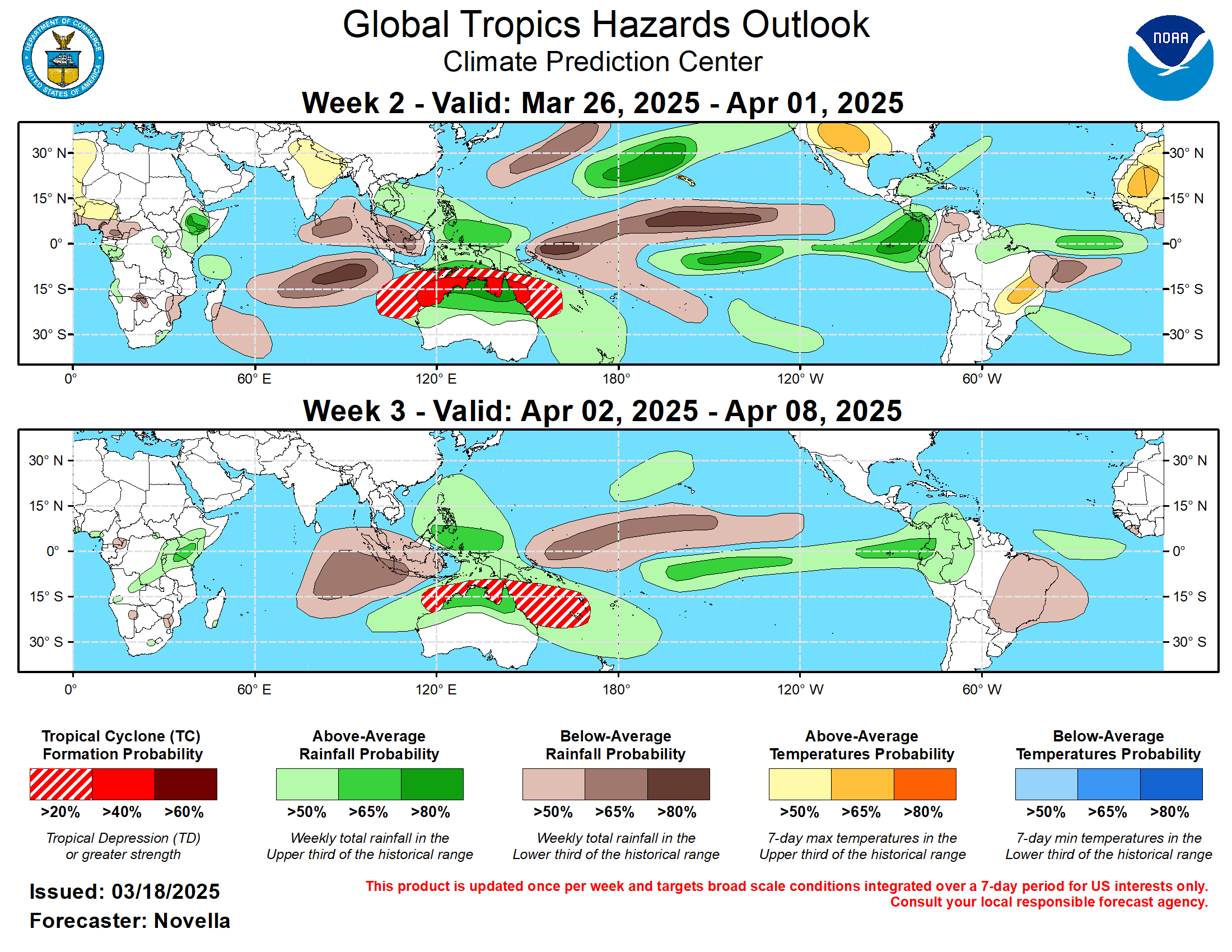This article focuses on what we are paying attention to in the next 48 to 72 hours. The article also includes weather maps for longer-term U.S. outlooks (up to four weeks) and a six-day World weather outlook which can be very useful for travelers.
First the NWS Short Range Forecast. The afternoon NWS text update can be found here after about 4 p.m. New York time but it is unlikely to have changed very much from the morning update. The images in this article automatically update.
Short Range Forecast Discussion
NWS Weather Prediction Center College Park
Sat Feb 15 2025
Valid 12Z Sat Feb 15 2025 – 12Z Mon Feb 17 2025…A life-threatening flash flooding event emerging over the lower to
mid-Mississippi, Tennessee and Ohio Valleys into parts of the Appalachians
with severe thunderstorms across the Deep South……Widespread moderate to locally heavy snowfall along with increasing
winds from the upper Midwest through the Great Lakes and New England this
weekend with a swath of sleet/ice just to the south……Another surge of arctic air will spread southward across the northern
U.S. this weekend into early next week with snow developing from the
northern Rockies into the north-central Plains……Pacific system will bring renewed round of lower elevation
coastal/valley rain and higher elevation snow to the Pacific Northwest by
Sunday…As a low pressure system exits the western U.S. and moves into the central
Plains early this morning, a high pressure system associated with a large
pool of arctic air in Canada is poised to surge southward into the Plains.
The interaction between the two systems will result in a rather large
cyclone to develop and intensify as it tracks from southwest to northeast
across the eastern half of the country through the next couple of days,
where widespread impactful to locally life-threatening weather is expected
in the path of this cyclone. Of immediate concern is a life-threatening
flash flooding event currently developing from the lower to
mid-Mississippi into the Tennessee Valleys, and gradually spreading into
the Ohio Valley. The combination of favorably strong dynamics interacting
with plentiful moisture along a warm front will contribute to widespread
intense thunderstorms increasing in coverage across these areas through
the day. Repeated rounds of intense storms will lead to rainfall rates of
1-2″ per hour and totals of 3-6″, with isolated amounts up to 8″ as the
storms move parallel to and back build along the front. The greatest risk
for this intense rainfall prompting life-threatening flash flooding will
be across portions of northwestern Tennessee and western Kentucky, where a
High Risk of Excessive Rainfall (level 4/4) is in effect. A broader
Moderate Risk (level 3/4) covers portions of the Mid-South to Ohio Valley,
with a Slight Risk (level 2/4) encompassing the general region east to the
Appalachians. Still potentially significant, but more scattered instances
of flash flooding will be possible in these areas. In addition to the
flood risk, severe weather is also expected, with an Enhanced Risk (level
3/5) issued by the Storm Prediction Center for portions of the lower
Mississippi Valley. Supercell thunderstorms ahead of the front will be
capable of all severe hazards today, including the risk for strong
tornadoes. The progress of a potent cold front will speed up across the
South into this evening, transitioning the threat to damaging winds and
QLCS tornadoes, which may continue further east into the Southeast
overnight Saturday. The system will continue eastward on Sunday, with a
broad area of showers and thunderstorms spreading across the Mid-Atlantic
and Southeast producing moderate to locally heavy rainfall, with some
isolated flash flooding possible in the southern Mid-Atlantic.To the north, a band of moderate to locally heavy snow is quickly
expanding from the upper Midwest into the Great Lakes today. Winter
Weather Advisories are in place for totals generally in the 3-6″ range. A
wintry mix will be possible in the transition zone along the storm track
through portions of the Midwest. As the storm intensifies, a more
significant winter storm is becoming likely for upstate New York and
northern New England late tonight into Sunday. Increasingly strong and
gusty winds may also lead to periods of blowing snow and very difficult
travel conditions as the intensifying cyclone passes through. Some
moderate snow totals will also be possible further south across higher
elevations of the Appalachians. By Monday morning, the deep storm will
begin to move east of New England with much of the rain moved off the East
Coast and the snow tapering off in New England. However, blusterly
northwesterly winds will usher much colder air into the eastern U.S. with
re-newed rounds of lake-effect snows downwind from the Great Lakes.Daytime high temperatures will be above average and rather mild for
regions ahead of the storm system from the central to eastern U.S. this
weekend. Forecast highs in the 50s to 70s are expected from the Ohio
Valley southward to the lower Mississippi Valley/Texas/Gulf Coast for
today. By Sunday, much warmer temperatures are forecast across the
Mid-Atlantic and Carolinas as temperatures reach into the 50s and 60s here
as well, with 60s and 70s in the Southeast ahead of the front. Arctic air
from Canada will then spread southward behind the front, bringing well
below average, bitterly cold temperatures to areas of the northern and
central Plains beginning today, with highs in the single digits and teens
for many locations. Some highs may not even reach above zero by Sunday.
By Monday morning, -30 degrees or colder temperatures are possible near
the Canadian border of the High Plains. Blustery winds will lead to wind
chills well below zero, particularly across the northern Plains. These
colder temperatures will expand into the Mississippi Valley and southern
Plains by Sunday with highs dropping into the 30s and 40s for most
locations.Back to the West, an upper-level trough/Pacific storm system will bring a
renewed round of precipitation to the Pacific Northwest beginning late
Saturday which will spread inland across the northern Great Basin/Rockies
into Sunday. This will include periods of moderate rainfall for coastal
locations, a mix of rain and snow for interior valleys, and moderate to
locally heavy snow accumulations for higher mountain elevations,
particularly across the Cascades and northern Rockies. By Sunday night
into Monday morning, moisture from the Pacific system will begin to
interact with a stationary arctic front to expand a swath of accumulating
snowfall from the northern Rockies toward and into the northern Plains.
To get your local forecast plus active alerts and warnings click HERE and enter your city, state or zip code. If the Hazards Outlook is not updated click here but remember it does not update during the weekend.
Learn about wave patterns HERE.
Then, looking at the world and of course, the U.S. shows here also. Today we are looking at precipitation.
Please click on “Read More” below to access the full Daily Report issued today.
| Notices: What would you like to learn about? Please provide that to me via the comment section at the end of the article. |
Now more detail on the 48-Hour Forecast (It is a 48 to 72 Hour Forecast actually)
Daily weather maps. The Day 1 map updates twice a day and the Day 2 and 3 maps update only once a day. These maps update automatically. But if that does not happen, you can get updates by clicking HERE
TODAY (or late in the day the evening/overnight map will appear) (Key to surface fronts shown on maps and you will then also be able to insert a city name or zip code and get a local NWS forecast).
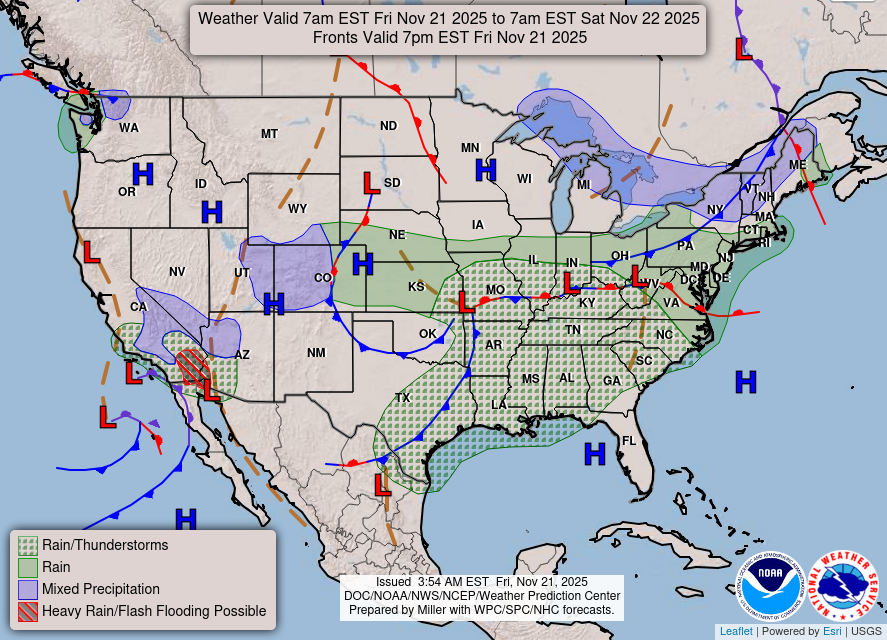
TOMORROW
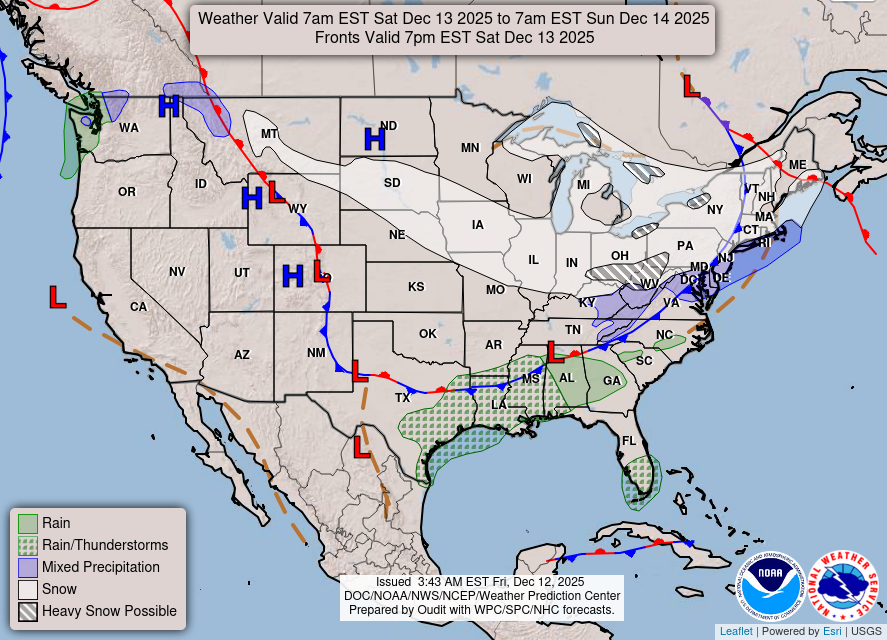
NEXT DAY
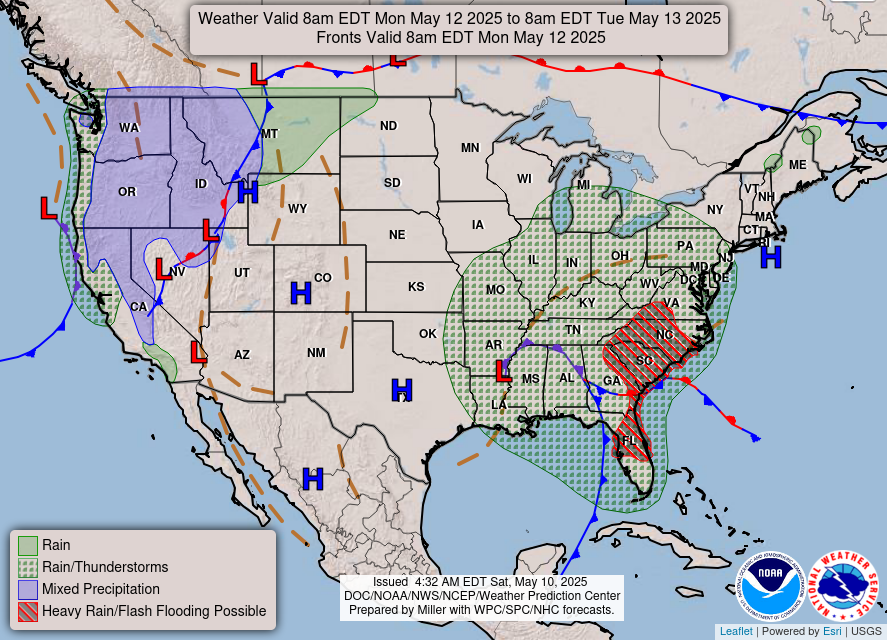
We have a new animation of the forecast which shows how things may play out over the next 60 hours. To update click ANIMATION. Doing so will get you to the dashboard. You can then step through the animation or hit LOOP on the upper right of the display. You will have to hit the back arrow ← at the top left on your computer to get back into this article. It is a little more trouble than before but I think NOAA scrapped the animation routine I was using so we have to keep up with “progress”.
The NWS Climate Prediction Center’s: Watches, Warnings, and Advisories plus other information can be found HERE. That takes you to the NWC Severe Weather Site. From there you can select among many categories of information. Remember to hit the back arrow ← at the top left of your screen to return to this article.
ATMOSPHERIC RIVERS
This tells us what is approaching the West Coast. Click HERE to update If I have not gotten around to doing the update. Here is some useful information about Atmospheric Rivers.

Below is the current five-day cumulative forecast of precipitation (Updates can be found HERE)
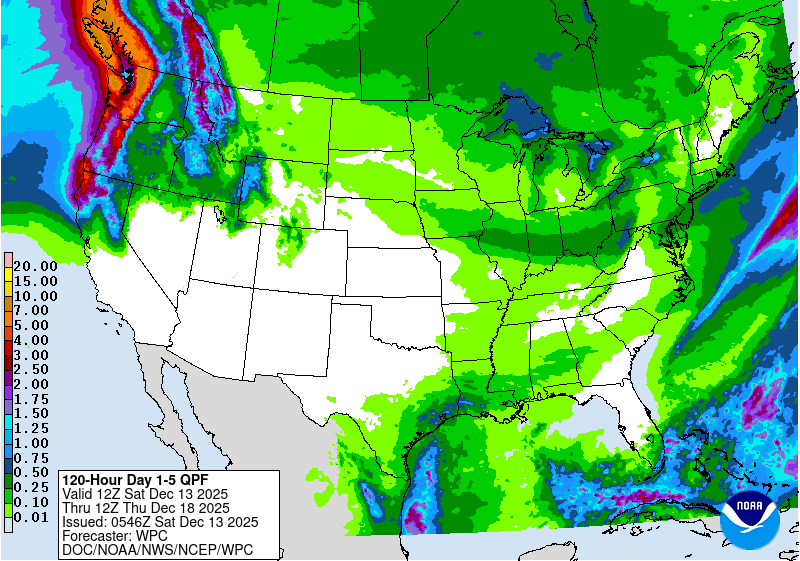
Ski SnowReports
New Feature – Ski Reports. It is difficult to find reports that auto-update on-screen (and they are very long) but these links will get you to them – If you have additional suggestions make them in the comments section after every Econcurrents Article and we may add those links. We will try to not have too much overlap as that can add to the confusion.
Snow Forecasts. And remember this shows natural snow. Ski resorts also make their own snow.
Day 1
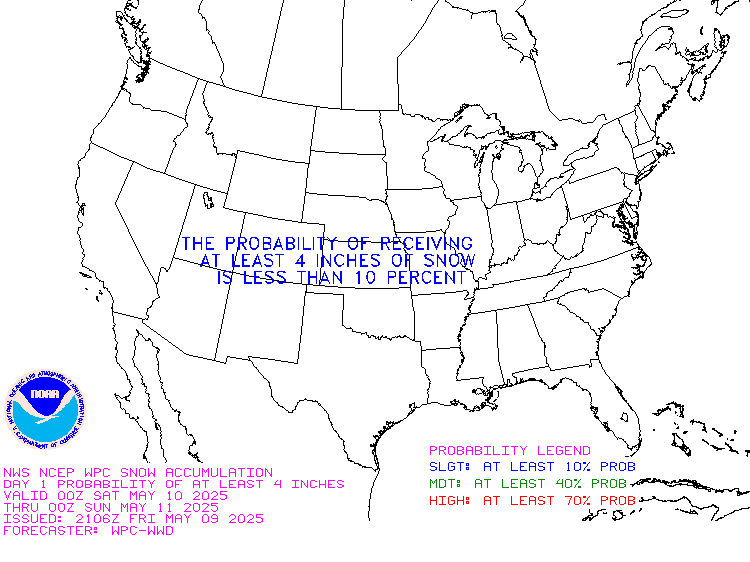
Day 2
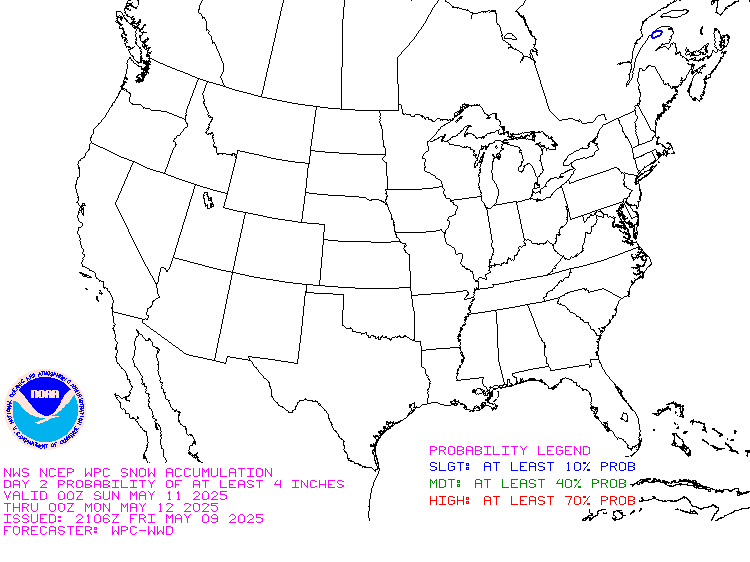
Now we look at Intermediate-Term “Outlook” maps for three time periods. Days 6 – 10, Days 8 – 14, and Weeks 3 and 4. An outlook differs from a forecast based on how NOAA uses these terms in that an “outlook” presents information as deviation from normal and the likelihood of these deviations.
Below are the links to obtain updates and additional information. They are particularly useful if you happen to be reading this article significantly later than when it was published. I always try to provide readers with the source of the information in my articles. These links may also be useful for those viewing this article on a cell phone or other small screen.
| Days 6 – 10 (shown in Row 1) | Days 8 – 14 (Shown in Row 2) | Weeks 3 and 4 (Shown in Row 3 but updates only on Fridays) |
| https://www.cpc.ncep.noaa. gov/products/predictions/610day/ | https://www.cpc.ncep .noaa.gov/products/predictions/814day/ | https://www.cpc.ncep.noaa.gov/products/predictions/WK34/ |
Showing the actual maps. They should now update automatically. The Week 3 – 4 Outlook only updates on Fridays. So below is what I call the Intermediate-term outlook. On Fridays, it extends out 28 Days. That declines day by day so on Thursday it only looks out 22 days until the next day when the Week 3 – 4 Outlook is updated and this extends the outlook by one additional week.
| 6–
10
|
|
|
| 8–
14 |
|
|
| 3–
4 |
|
|
HAZARDS OUTLOOKS
Click here for the latest complete Day 3 -7 Hazards forecast which updates only on weekdays. Once a week probably Monday or Tuesday I will update the images. I provided the link for readers to get daily updates on weekdays. Use your own judgment to decide if you need to update these images. I update almost all the images Friday Night for the weekend edition of this Weather Report. So normally readers do not need to update these images but if the weather is changing quickly you may want to.
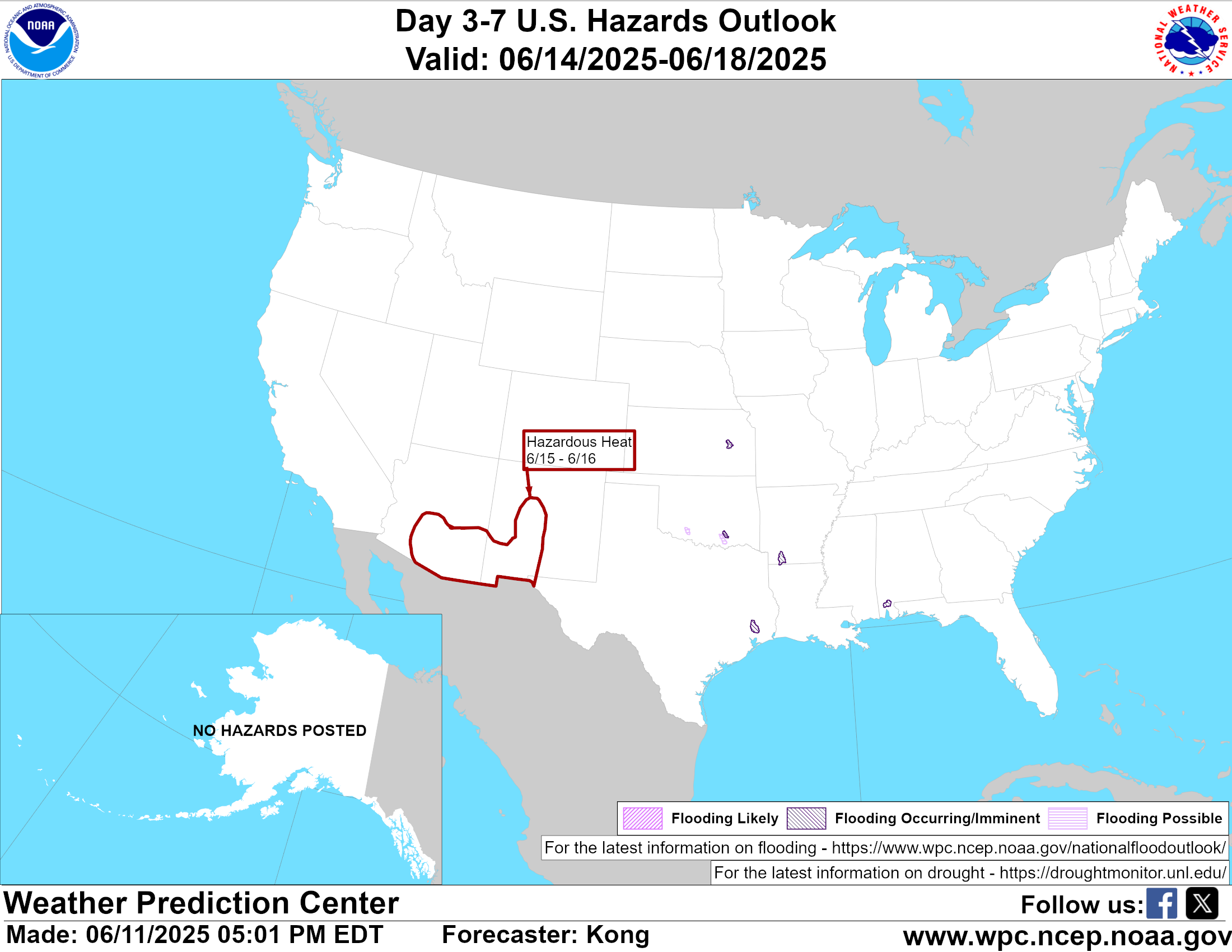
Temperature month to date can be found at https://hprcc.unl.edu/products/maps/acis/MonthTDeptUS.png
Precipitation month to date can be found at https://hprcc.unl.edu/products/maps/acis /MonthPNormUS.png
World Forecast [that website is has been intermittent so be patient]
Below are the Day 1 -3 and 4-6 forecasts for temperature and precipitation. Updates and much additional information can be obtained HERE
World Temperature Anomalies

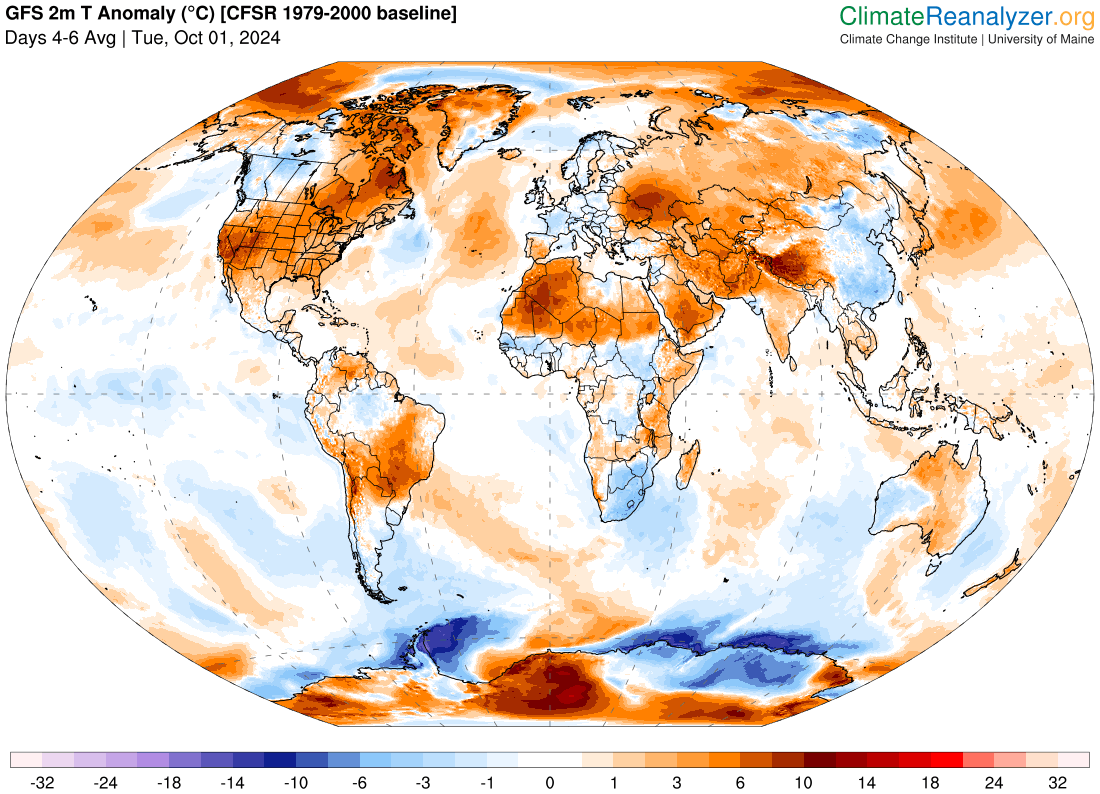
World Accumulated Precipitation
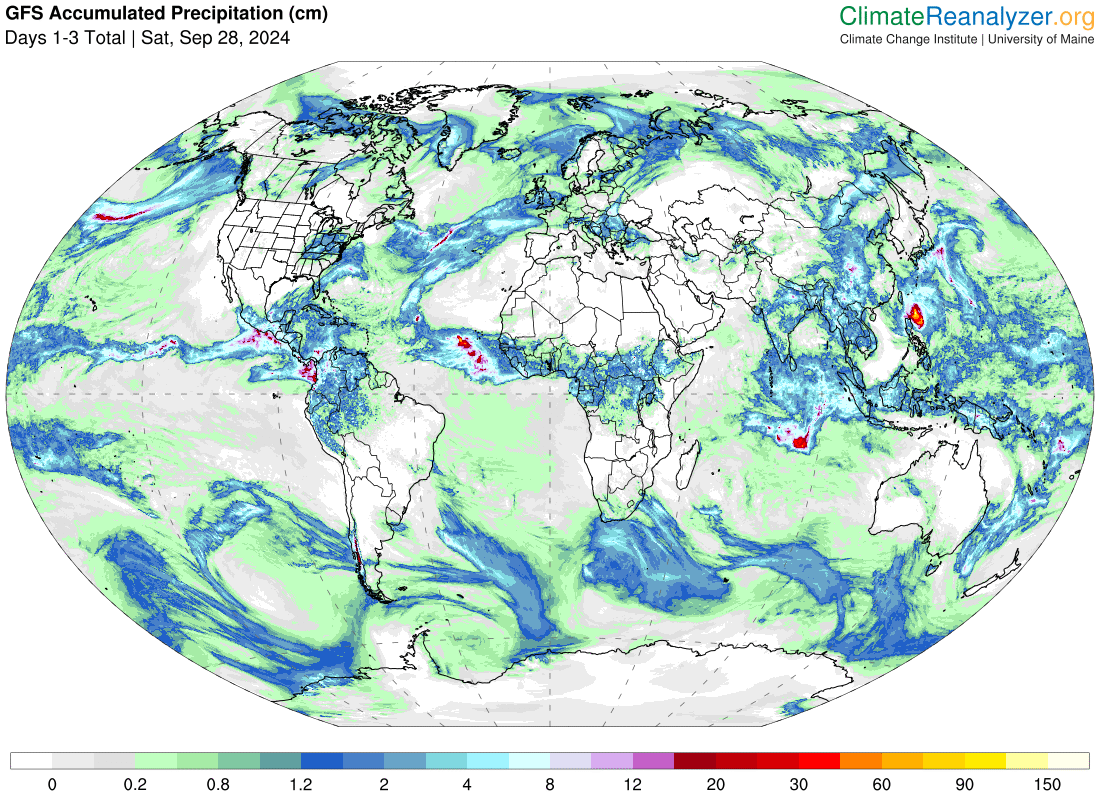
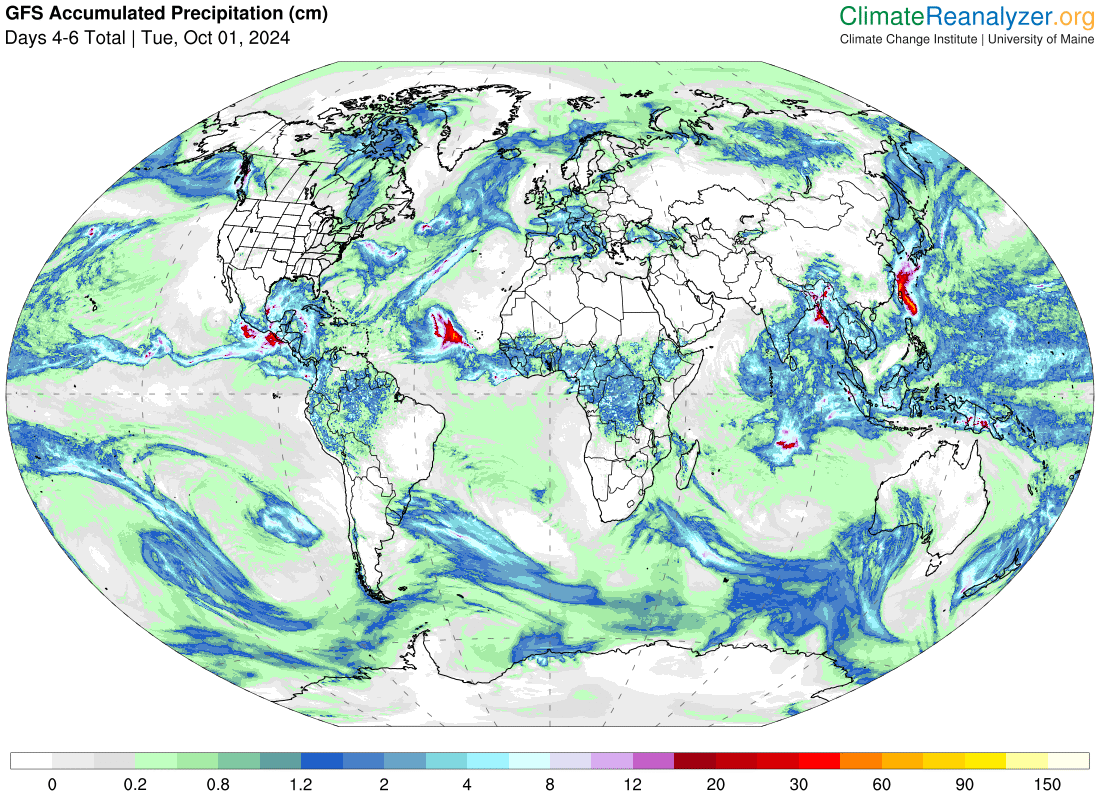
This information is provided by the University of Maine. They draw upon many different sources. There is a lot of information available at the link provided. I have just provided two useful forecasts. There are probably over a hundred different forecasts available from this source.
Worldwide Tropical Forecast (This is a NOAA Product)
This graphic updates on Tuesdays) If it has not been updated, you can get the update by clicking here Readers will only have to do that if they are reading this article much later than the date of it being published.
Information on Tropical Storms can be found HERE. Western Pacific information can be found HERE. Note that unless there is an out-of-season storm the below images will not update until the National Hurricane Center starts their seasonal update of these maps on June 1. I include them simply because there can be an out-of-season event in which case it should show up in these maps.
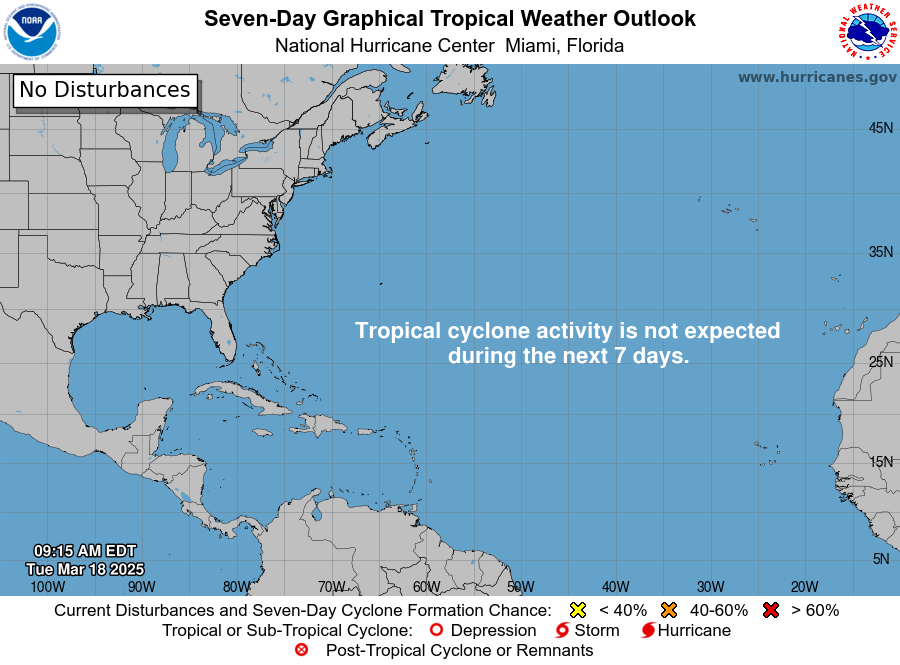
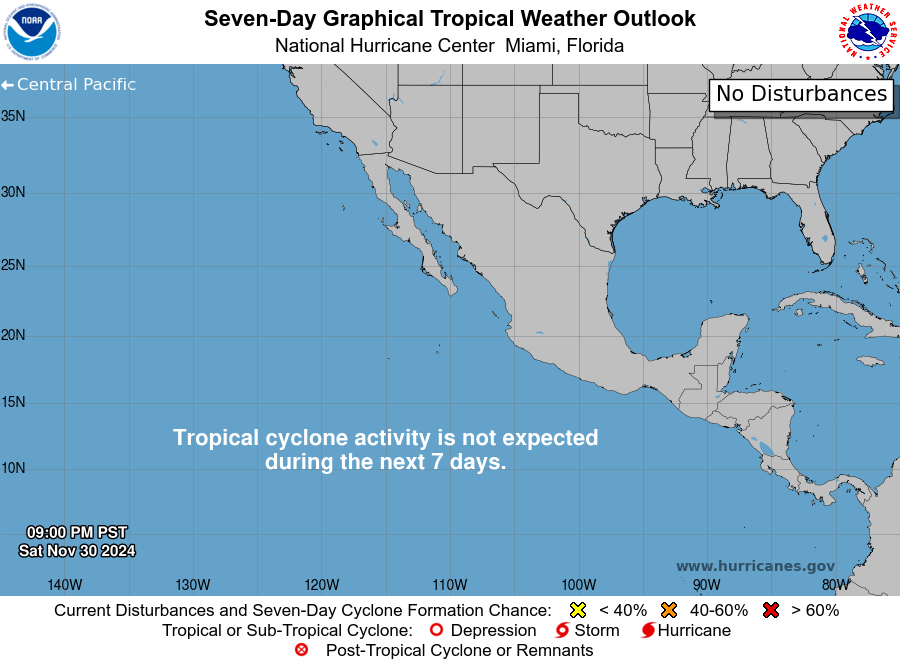
–
| I hope you found this article interesting and useful. |

